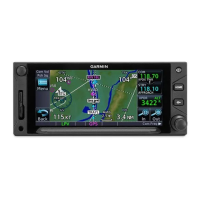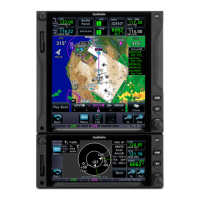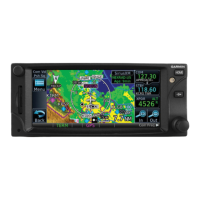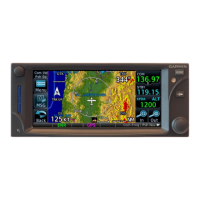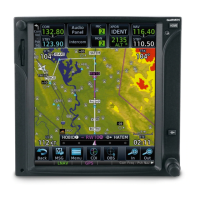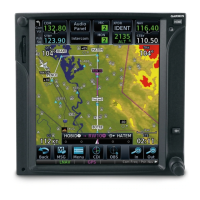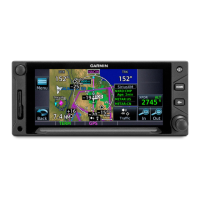viGTN 650: USING ON-SCREEN CONTROLS
Using the Touch-Screen Controls
e GTN touch screen works much like the interactive screen on a smart phone. You control the GTN by
touching the appropriate window, button, icon, label, or letters and numbers on the keypad. e specic con-
trols that appear depend on the selections that you make.
e top of the main display always shows the active and standby frequency windows of the com and nav
radios. Other items, such as transponder controls and audio panel/intercom controls, may also appear on the
main display, depending on the optional equipment installed in your aircra.
You can drag your n-
ger across most windows
to scroll vertically or hori-
zontally, and you can pinch-
to-zoom the map and some
other displays, such as op-
tional charts, just as you do
when using a smart phone.
Some windows, such as
the Active Flight Plan win-
dow, also include up and
down arrows. TOUCH the
arrows to scroll vertically to see all the information available in the window.
e Default Navigation page includes important items such as:
A. A course deviation indicator (CDI) with a horizontal scale. e CDI includes information about the
active waypoint or ight plan leg.
B. A Back button to return to the previous display.
C. A Menu button for quick access to the Map menu.
D. A CDI button to select the navigation source (GPS or VLOC) that will appear on a separate primary
ight display, horizontal situation indicator, or other connected naviga-
tion indicator.
E. An OBS button to select specic courses, much like the OBS selector on a
traditional HSI or VOR indicator.
F. Quick access to the Map Page.
ose are not the only buttons, however. e specic buttons appearing at
the bottom of the display depend on the page that you are viewing, much like the
buttons on a smart phone or ATM.
An alpha-numeric keypad or numeric keypad appears when you touch a window that requires entry of
data, such a waypoint name or a frequency.
TIP
If you wear gloves while
using the GTN, see
“19.4 Glove Qualifica-
tion Procedure” in the
GTN 625/635/650
Pilot’s Guide.
A
DB E
C
F

